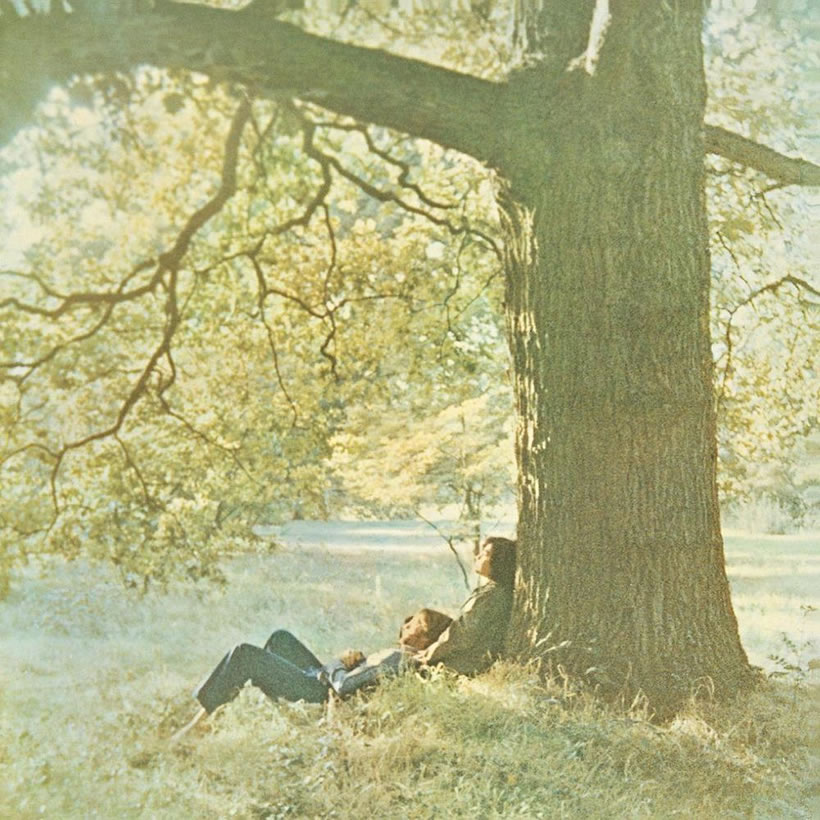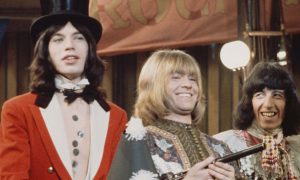John, Paul, George, and Ringo had been together for close to a decade. Together, more than almost anything or anyone, they defined the sixties. In April 1970 when they had officially “broken up” John Lennon was 29 years old and was finding his own “voice” – his very personal sense of musical being.
The Beatles break-up was viewed by just about everyone around the world as a catastrophe, but this view was largely based on the notion that every fan somehow felt the Beatles to be their own personal property, as well as an entity that was immovable, and permanent, which no one could, or should, put asunder. Most fans could not comprehend what life was like, within the Beatles-bubble and it was impossible to understand the kind of life, and work, it was… being a Beatle.
“I don’t believe in Beatles; I just believe in me – Yoko and me.” – John’s lyrics from “God”
There was no hope of keeping the (Beatles) dream alive, but John was full of creative energy. In the year from November 1968, John and Yoko released three fascinating sonic experiments, along with the Live Peace LP that was recorded on stage in Toronto in September 1969 and released three months later. One of which, John Lennon/Plastic Ono Band that was released on December 11, 1970, and entered the UK charts on January 16, 1971.
Listen to John Lennon/Plastic Ono Band now.
John felt passionately about the albums he and Yoko made – Unfinished Music No. 1: Two Virgins, Unfinished Music No. 2: Life with the Lions, and the Wedding Album. Aside from their experimental nature all three are radical, avant-garde, and innovative; like audio documentaries they are, above all else, visceral, raw, and honest. In this respect, they are the musical antecedents of both John Lennon/Plastic Ono Band and Yoko Ono/Plastic Ono Band. The controversy surrounding the cover of Two Virgins was enormous at the time, and it was clear that John and Yoko wanted to be nothing less than naked in their honesty.
John had also had three hit singles with “Give Peace A Chance,” “Cold Turkey” and “Instant Karma!” By July 1970 his mind was once again turning to music. John and Yoko were in Los Angeles having gone there to continue Primal Therapy sessions that had begun at the couple’s Tittenhurst Park home early in 1970 and then continued in London with Dr. Arthur Janov, an American psychotherapist.
John and Yoko returned home from California on September 24, 1970, and two days later they once again walked through the familiar front door of Abbey Road Studios, ready to record John’s songs; some of which had been started in England and then worked on in California.
At Abbey Road were John’s old friend from the Beatles’ time in Hamburg, Klaus Voormann who played bass, and Ringo Starr on drums. Later, they were joined by keyboard player Billy Preston, who had worked on the sessions for Let It Be, and also Phil Spector who played some piano and co-produced the album with John and Yoko. As Yoko explained, “Phil Spector came in much later: we made most of it by ourselves. If he, Phil, had done it from the beginning I am sure it would have been a totally different album.”
“John Lennon/Plastic Ono Band is a strip down of John’s soul.” – Yoko Ono
The album was recorded over a four-week period at both Abbey Road and Ascot Sound Studios, the studio that John and Yoko had built at Tittenhurst Park. The songs on this album are about as far removed from the sound of the Beatles as it’s possible to get. Yes, there’s John’s distinctive voice and there is the odd sonic-nod to the sound of latter-day Fab Four, but this is music that is as personal as it gets.
Recorded at the same time as John Lennon/Plastic Ono Band is Yoko Ono/Plastic Ono Band, an insight into how John viewed the totality of his relationship with Yoko. As he sings in “God,” “I just believe in me, Yoko and me,” and he also sings about his wife in “Hold On,” “Isolation” and “Love,” the latter song has Yoko’s songwriting fingerprints all over it. The inseparability of their love was also reflected in the cover artwork that was virtually the same. Sonically with John, Klaus and Ringo providing the music for Yoko’s album it further shows the oneness of the two albums.
The album’s opening song, “Mother,” includes the searing observation “Mother, you had me, but I never had you,” and it didn’t stop there as John wails “Mama don’t go/Daddy come home” in the closing coda. Fans buying the album upon its release were shocked by what they heard, but in a good way, and this shock has turned to awe over the decades as this album has come to be regarded as one of the boldest artistic statements by a rock artist.
The stripped-down sound of the Plastic Ono Band is the perfect musical accompaniment to John’s songs of bare-naked confession and outpouring. There’s “Working Class Hero,” a nod to John’s school days, but as John told Jonathan Cott for Rolling Stone magazine in 1980, “The thing about the song that nobody ever got right was that it was supposed to be sardonic – it had nothing to do with socialism, it had to do with “If you want to go through that trip, you’ll get up to where I am, and this is what you’ll be.” Because I’ve been successful as an artist, and have been happy and unhappy, and I’ve been unknown in Liverpool or Hamburg and been happy and unhappy. But what Yoko’s taught me is what the real success is – the success of my personality, the success of my relationship with her and the child, my relationship with the world… and to be happy when I wake up. It has nothing to do with rock machinery or not rock machinery.”
There’s also the tenderness of “Hold On,” a song that was a rough mix done at the end of the sessions that John felt was good enough to include…and so good he did – it’s a perfect record. Phil Spector plays a beautiful piano part on “Love” and it is a song that supports the notion of beauty in simplicity as well as any Lennon composition throughout his career.
“God” for many people is the highlight of this album, with Billy Preston’s gospel-influenced piano that adds immeasurably to the vibe of the song. But it is John’s lyrics that make this a statement of an intensely personal nature. “I don’t believe in Beatles”? This was a statement of both hurt and of intent, John Lennon was a solo artist. As he told Jann Wenner shortly after its release, “The dream’s over. I’m not just talking about The Beatles is over, I’m talking about the generation thing. The dream’s over, and I have personally got to get down to so-called reality.”
There’s not a traditional hit single among the songs on John Lennon/Plastic Ono Band, but this was not written with the view to releasing singles, this is a body of work, an artistic as well as personal statement. This is why the long-playing record was invented. It is music that should be listened to in a single sitting, considered, relished, and revered.
Despite this, there was one single released from the album, and that was Mother, backed with Yoko’s song “Why,” that peaked at No. 43 on the US Hot 100. The album reached No. 8 in the UK and No. 6 in the States, after critics had lined up to praise its sometimes painful honesty. John Lennon/Plastic Ono Band has continued to fare well in all-time polls in later years. In 1987 Rolling Stone named it the fourth-best album of the previous 20 years, and their top 500 chart in 2003 placed it at No. 22.
And finally… And this is what makes this album work on an entirely different level from so many records. Listen to it by yourself, in a place where you can play it loud, and you will have the inescapable feeling that you are in the room with John and the other musicians. Personal, artistic, and quite simply brilliant.




